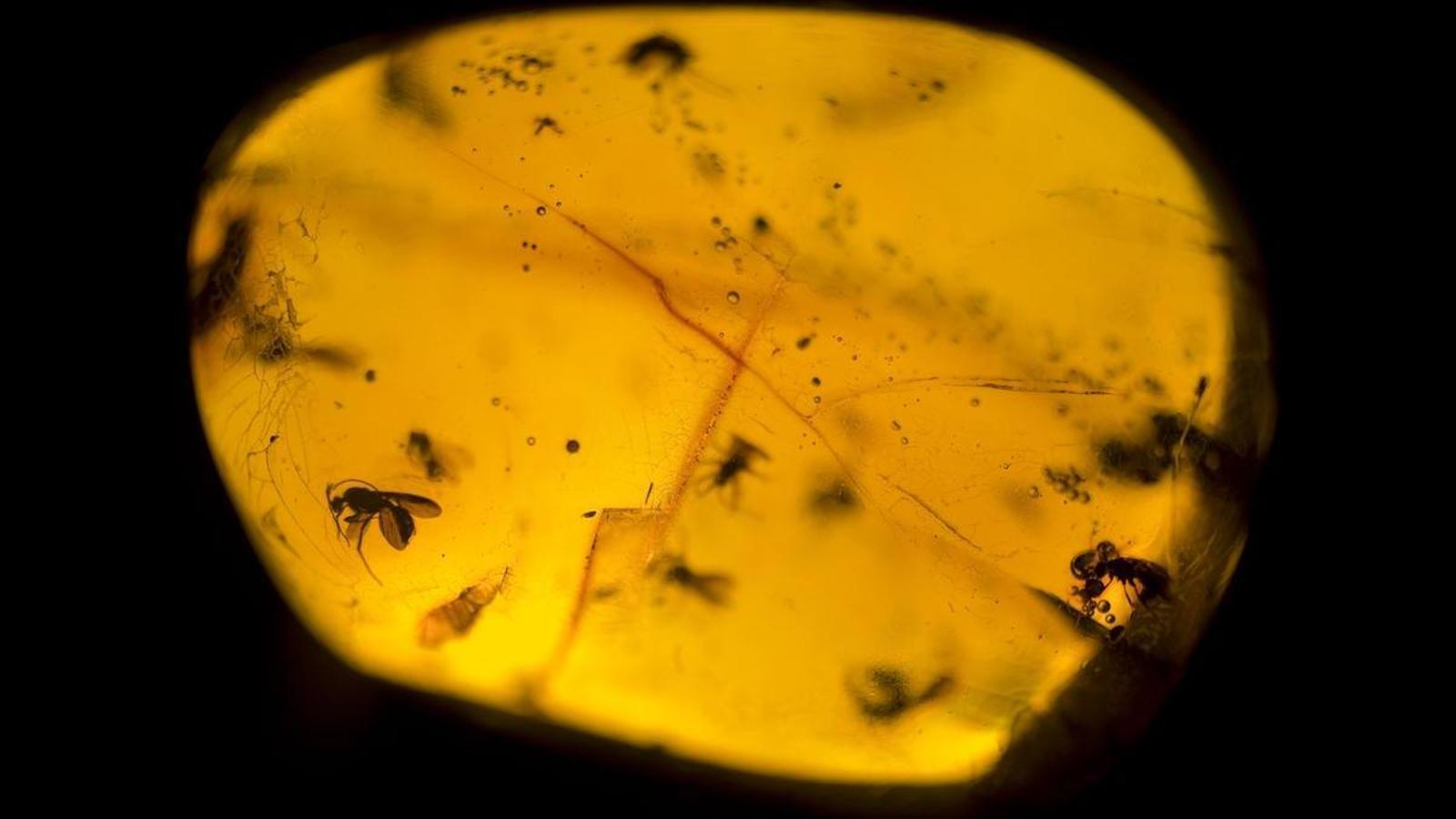Could we de-extinct the dinosaurs as Jurassic Park suggests?
After a company announced it had "resurrected" the giant wolf, could we do the same with these enormous animals?


Coinciding with the summer, the latest film in the series initially based on the famous book has just been released in theaters. Jurassic Park by Michael Crichton. This science fiction adventure novel, published in the 1990s, posed the possibility of the de-extinction of the dinosaurs using DNA from these extinct animals extracted from the blood sucked by mosquitoes that had been trapped in the resin turned into amber. Crichton was inspired by the advances in genetic engineering in the 1980s and the potential applications of PCR (polymerase chain reaction, which allows any DNA fragment to be amplified and which we have heard so much about during Covid-19). Shortly after, Steven Spielberg, with his gift for directing films that tell stories that manage to capture everyone's imagination, made a highly successful film, with a recognizable and iconic logo.
You've surely heard that the group of sauri from which the dinosaurs emerged is not totally extinct, since the birds belongNow, the dinosaurs that truly fascinate us are the largest and most powerful, either because they have a wingspan that seems implausible to us, or because they are magnificent predators. So, with each new film, the question resurfaces in the public's mind... what if it were really possible to "rescue" the DNA of different dinosaurs and introduce their genes into a modern-day saurian to turn it into a tyrannosaurus, a velociraptor, or a diplodoc?
Extinguished by a meteorite
Let's take it one step at a time, the vast majority of dinosaurs – and all terrestrial organisms that weighed more than 25 kilos – were They became extinct about 66 million years ago with the impact of a meteorite which expelled dust and ash into the atmosphere, causing a climatic winter that lasted for years and made it difficult for sunlight to reach us, which did not allow plants to photosynthesize, which disappeared massively, and, consequently, herbivores and carnivores disappeared from the surface. Therefore, if it is necessary to obtain genetic information from dinosaurs, we would have to go back more than 66 million years in the past. Is this possible?
If we think about the amber that appears in the book, fossil resin is not a material that allows DNA to be preserved, since it is porous, allows water to enter, and the genetic material is eventually destroyed. Articles were published believing that genetic information could be obtained from this fossil material, but it has been shown that it is very difficult to obtain it from insects from non-fossil resin that is only 7 years old. And, therefore, all current evidence indicates thatDNA previously amplified from amber and fossil resin would be the result of contamination. It is true that current techniques make it possible to obtain ancient DNA from particularly preserved locations, such as environmental DNA from samples of frozen soil in Greenland, dating back some 2.4 million years. Despite this ambitious goal, DNA is highly degraded, and only the sequences of very specific genes, multiplied within the genomes of organisms, are obtained, which only allow the identification of genera and species. Therefore, according to current paleogenomics (the study of the DNA of very ancient species), it does not seem realistic or possible to obtain DNA from 66 million years ago.
Can we obtain genetic information from ancient organisms? If instead of searching for DNA, we try to infer genetic information from ancient proteins, paleoproteomics also makes it possible to identify specific proteins. Just a few weeks ago, in an almost unbelievable milestone, researchers managed to obtain partial sequences of Dental enamel proteins from fossils of an ancestral rhinoceros species from approximately 24 million years ago, buried and preserved in the ice of the Canadian Arctic. Now, this isn't DNA, but proteins, which give us much more limited information, and remember that dinosaurs became extinct many millions of years before. Furthermore, dinosaur fossil remains are petrified, meaning organic remains can no longer be obtained. Therefore, neither DNA nor proteins can be sequenced, so we can't obtain anything from a dinosaur to introduce into a current species. Therefore, no, dinosaurs cannot be de-extinct.
And a dinosaur-like animal?
That said, we could ask ourselves if it was possible to create an animal that "reminds" us of a dinosaur. This question cannot be answered directly because it contains many assumptions and also requires a lot of progress. Hypothetically, we could think about what characteristics attract us to certain dinosaurs. We could sequence modern-day saurians and identify important genes that code for these characteristics. Once the genes are identified, we could figure out what mutations could cause changes in modern-day saurians that would allow them to incorporate characteristics that make them more similar to dinosaurs.
If, in addition, we had sufficient knowledge of the manipulation of the embryos of these modern-day saurians, we could introduce these genetic changes into their genome. And then, what would we do? Could these animals survive? Perhaps we could sit back and see what the new organisms we have generated are like, which would not be dinosaurs at all, but rather lizards "tuned" to satisfy our curiosity or morbid curiosity, as has recently been done with gray wolves modified to resemble extinct giant wolves. We must be rigorous. Giant wolves haven't been generated, nor would we de-extinct dinosaurs. But do we really, really want to modify animals to resemble what we desire, denying them what they really are?
